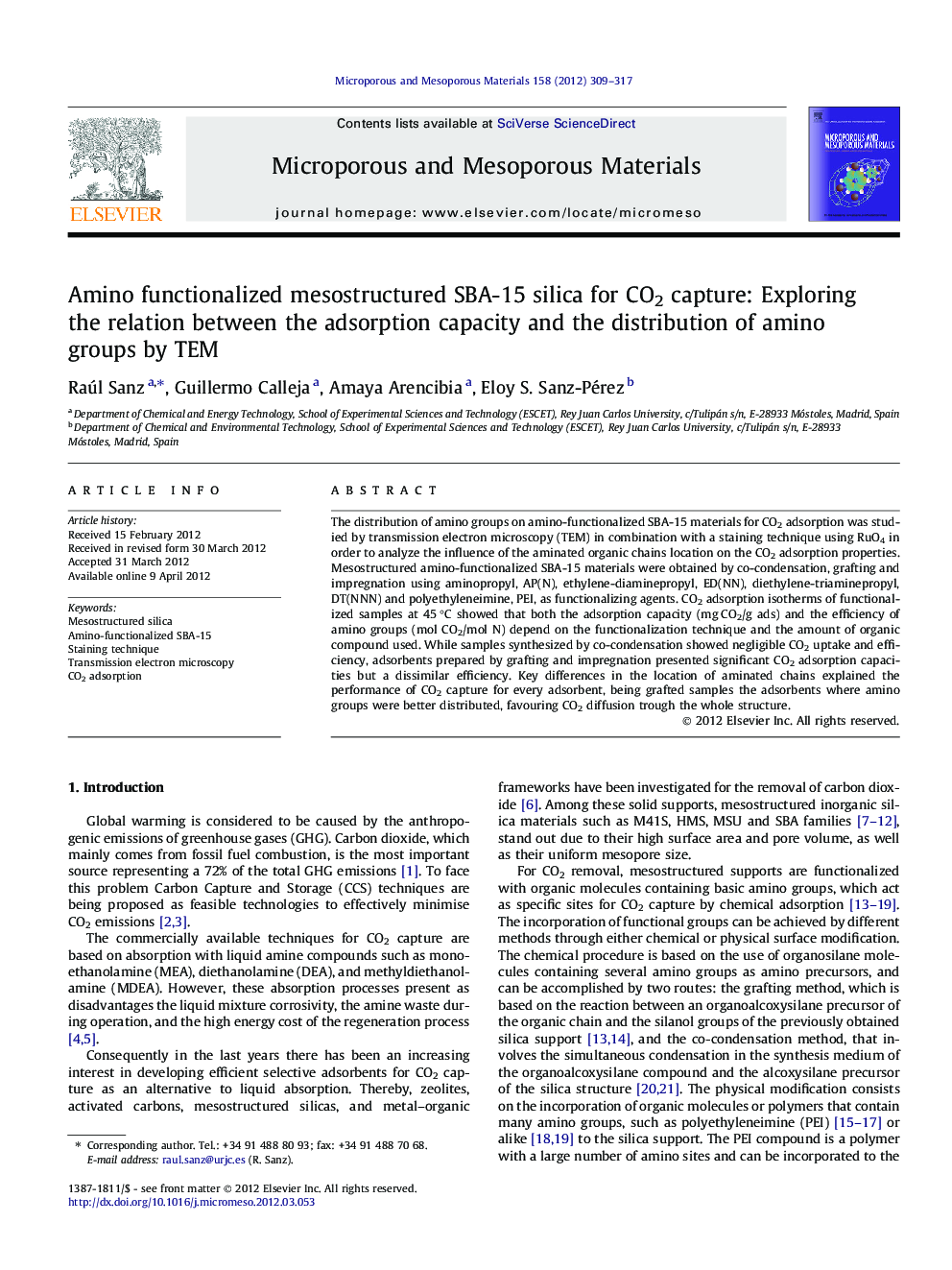| Article ID | Journal | Published Year | Pages | File Type |
|---|---|---|---|---|
| 74385 | Microporous and Mesoporous Materials | 2012 | 9 Pages |
The distribution of amino groups on amino-functionalized SBA-15 materials for CO2 adsorption was studied by transmission electron microscopy (TEM) in combination with a staining technique using RuO4 in order to analyze the influence of the aminated organic chains location on the CO2 adsorption properties. Mesostructured amino-functionalized SBA-15 materials were obtained by co-condensation, grafting and impregnation using aminopropyl, AP(N), ethylene-diaminepropyl, ED(NN), diethylene-triaminepropyl, DT(NNN) and polyethyleneimine, PEI, as functionalizing agents. CO2 adsorption isotherms of functionalized samples at 45 °C showed that both the adsorption capacity (mg CO2/g ads) and the efficiency of amino groups (mol CO2/mol N) depend on the functionalization technique and the amount of organic compound used. While samples synthesized by co-condensation showed negligible CO2 uptake and efficiency, adsorbents prepared by grafting and impregnation presented significant CO2 adsorption capacities but a dissimilar efficiency. Key differences in the location of aminated chains explained the performance of CO2 capture for every adsorbent, being grafted samples the adsorbents where amino groups were better distributed, favouring CO2 diffusion trough the whole structure.
Graphical abstractFigure optionsDownload full-size imageDownload as PowerPoint slideHighlights► The location of amino groups on functionalized SBA-15 is determined by TEM. ► The efficiency of CO2 capture is controlled by the amino sites distribution. ► PEI impregnates SBA-15 as an external layer, avoiding the full use of amino groups. ► Grafting leads to homogeneously distributed amines achieving maximum CO2 efficiency.
